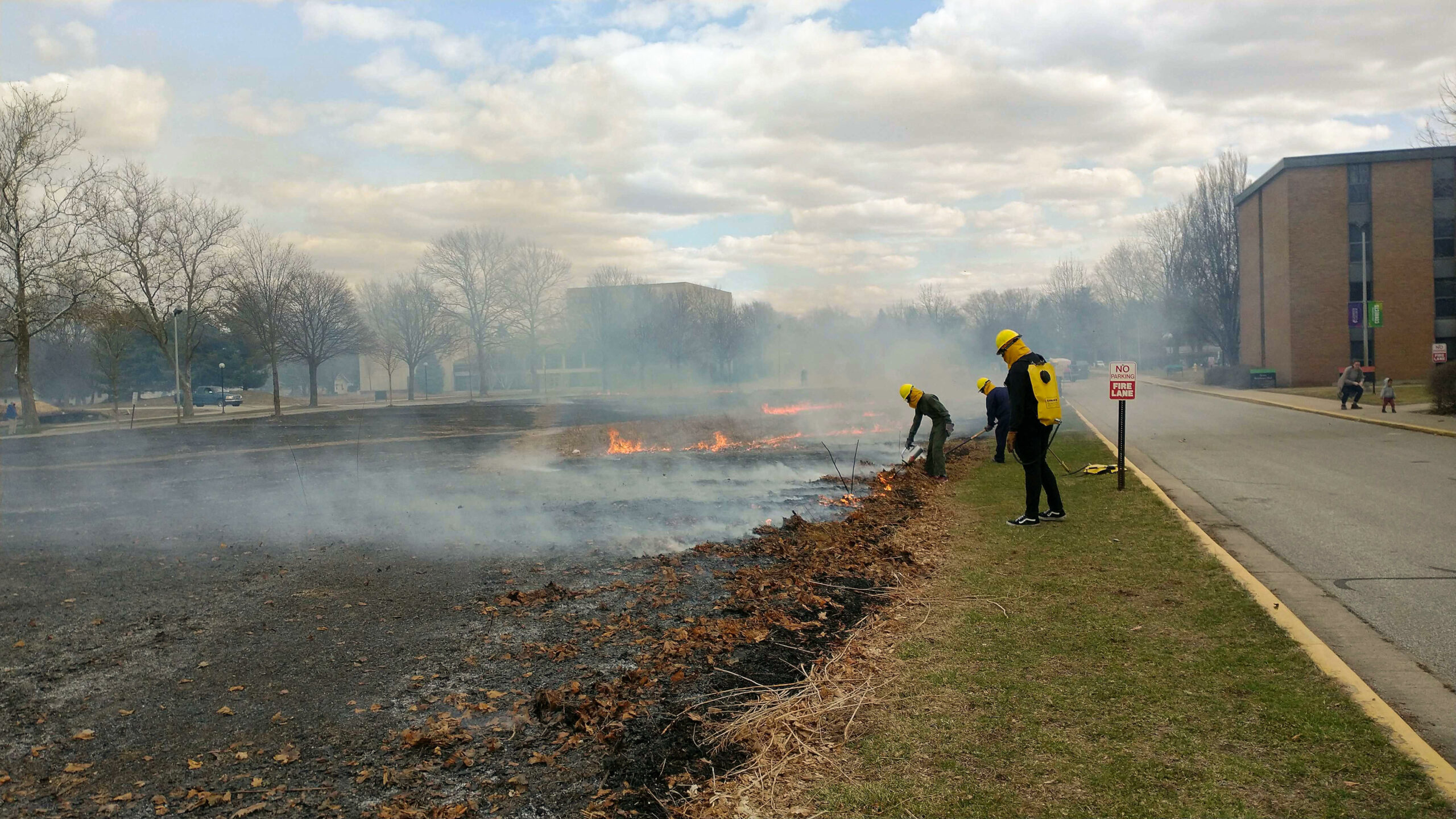This past week, students and faculty involved with burning the Miller-Kratz Prairie slipped into their flame-resistant jumpsuits and donned a hard hat, goggles and a shroud to protect themselves. Backpack sprayers sat heavily on their shoulders, used to put out any stray flames that came too close to the green grass. The flattened prairie brush was their target.
There are protocols that have to be followed in order to keep the fire from running amok, junior environmental science major Josie Strader, one of the student prairie managers, explained.“We first have to identify the direction the wind is coming from, then we start burning from the furthest point downwind,” Strader said. “We then use that area as a firebreak [a previously burned buffer area to help control spread] and continue burning from the furthest point upwind.”
The flames will eventually converge at a roughly central point. Burning on a windy day seems counterintuitive to most people, as it can be hazardous in the case of, say, lighting a bonfire to dispose of excess sticks and leaves. But in the case of prairie burns, harnessing wind (and water) to move and contain the flames is crucial to both safety and efficacy.
Drip torches were used to light the blaze. These are canisters of fuel with an igniter on the end of the nozzle. When this is triggered, burning fuel drips out, hence the name drip torch. In this case, the fuel was a mixture of diesel and gasoline, neither of which are carbon-neutral.
When asked about the carbon impact of the burnings, biology professor, Ryan Sensenig, stated that since Goshen College only does this once a year, there’s less of a carbon footprint compared to mowing the lawn throughout the year.
Alex Neufeld, first-year biology major and another student prairie manager, noted the many environmental benefits of the controlled burns, including clearing the way for new growth by getting rid of the old stems, thus allowing the new seeds to germinate.
“The burn favors the grasses which sequester more carbon,” Neufeld explains. “Therefore, by burning the prairie, we actually increase the carbon stored in the soil.”
Strader added that the burning triggers an increase of plant growth and higher tissue quality. Moreover, the fires keep non-native, cool-season grasses such as the green on the campus lawns–an English import, according to Strader– from sprouting in the prairie areas. Our native prairie grasses emerge later in the season, so they will have an advantage thanks to the burns.
Prairie burns have taken place on the Goshen College campus since 2012, three years after Newcomer Prairie was planted. The Miller-Kratz and Music Center prairies were first burned in 2014, following the same pattern. Since then, areas burned have varied from year to year, depending on weather conditions and student involvement.
In the past week, students burned parts of Goodrich Prairie at Merry Lea Environmental Center on Saturday. As mentioned prior, Miller-Kratz and the Music Center Prairies were burned on Monday, and the other prairie areas will be burned in the near future, weather permitting.




